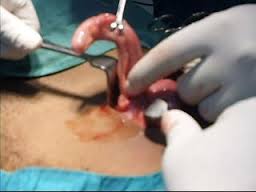Appendicitis is the inflammation of appendix. It causes a severe pain in the abdomen. Appendix doesn’t have known function in humans, therefore it is believed to be one of the vestigial organ of human beings. There are still speculations about the function of appendix, some say it is used to house useful bacteria etc. Appendix is situated in the junction of small intestine and large intestine. The size is around 4 inches long. The position of the appendix is towards right side of the abdomen
Appendicitis is caused due to a vestigial organ
Causes of appendicitis
The cause of appendicitis is still unclear. Doctors and scientist believe that the cause of inflammation and pain of appendix is obstruction in the appendix. The obstruction may be complete or incomplete. Complete obstruction causes severe pain and appendectomy is done immediately.
Obstruction of appendix is often caused due to fecal matter accumulation. Other obstructions include worms, tumors, and enlarged lymphoid follicles.
Due to this obstruction there is a good chance of bacterial growth that causes infection and therefore pain etc. It is fatal if the infection spreads or the appendix ruptures due to the pressure, leaking the contents of the large intestine into the abdomen.
Symptoms of appendicitis
- Lower right side abdominal pain
- Loss of appetite
- Nausea

- Vomiting
- Diarrhea
- Inability to pass gas
- Abdominal swelling
- Low grade fever
Diagnosis
The following tests are done when a patients complains of having abdominal pain at right side and other symptoms mentioned above
- Medical examination: The original test for appendicitis, a simple examination of the belly remains important in making the diagnosis. Changes in the abdominal exam help doctors tell if appendicitis is progressing, as well.
- CT scan (computed tomography): A CT scanner uses X-rays and a computer to create detailed images. In appendicitis, CT scans can show the inflamed appendix, and whether it has ruptured.
- Ultrasound: An ultrasound uses sound waves to detect signs of appendicitis, such as a swollen appendix.
- Complete blood count (CBC): An increased number of white blood cells — a sign of infection and inflammation — are often seen on blood tests during appendicitis.
- Other imaging tests: When a rare tumor of the appendix is suspected, imaging exams may locate it. These include magnetic resonance imaging (MRI), positron emission tomography (PET), and CT scans.
Treatment
Appendectomy is the only possible treatment for appendicitis. Sometimes it is treated by using antibiotics, however most often appendix is removed by surgery.

